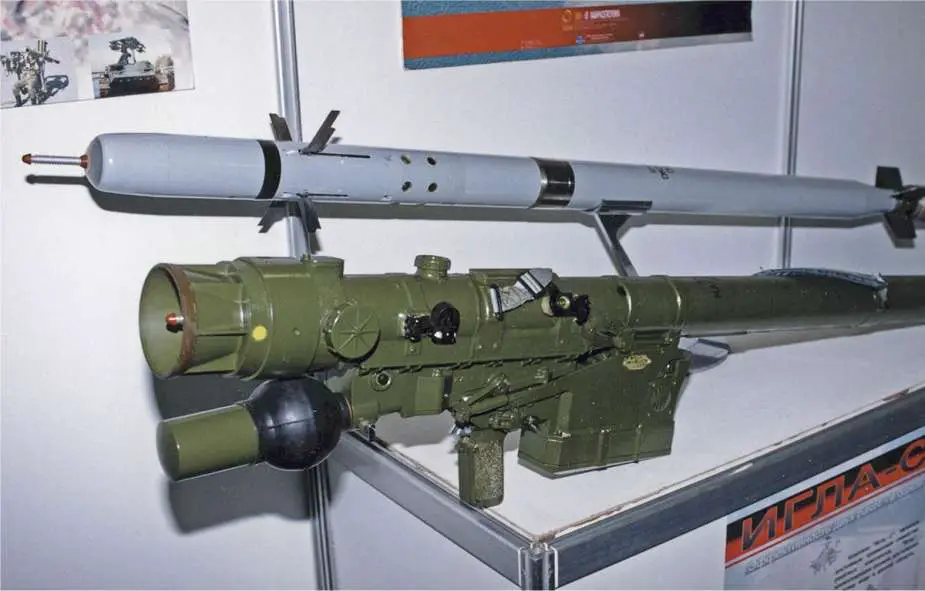Breaking news
India received the initial shipment of Igla-S MANPADS from Russia.
India has recently fortified its air defense capabilities by acquiring a new batch of Igla-S Man Portable Air Defense Systems (MANPADS) from Russia, intended for deployment along the Line of Actual Control (LAC). This initial delivery of Igla-S MANPADS includes 24 launchers and 100 missiles, forming part of a broader agreement that will see subsequent systems manufactured domestically under a technology transfer agreement with Russia. This move aims to enhance the Indian Army's Very Short Range Air Defense (VSHORAD) capabilities, particularly along the Line of Actual Control (LAC), the high-altitude northern borders where new air defense formations are being established.
Follow Army Recognition on Google News at this link

Following this initial batch from Russia, future systems will be produced in India by an Indian company as part of the technology transfer deal (Picture source: Rosobonexport)
The Igla-S system, with an interception range of up to 6 kilometers, represents a significant upgrade from the currently used Igla-1M systems. A limited number of these systems were initially introduced in 2021 as part of an emergency procurement, but this new order is part of a more extensive and planned initiative. Following this initial batch from Russia, future systems will be produced in India by an Indian company as part of the technology transfer deal.
This procurement follows a lengthy selection process that began in 2010 under the then United Progressive Alliance (UPA) government. In 2018, Rosoboronexport, the Russian manufacturer of the Igla-S, was chosen over competitors from France and Sweden in a bidding process that declared it the lowest bidder. However, the selection faced controversy as competitors from France and Sweden protested the decision, alleging that the Russian system did not meet the technical requirements outlined in the Request for Proposal (RFP).
MANPADS are crucial in high mountainous regions to neutralize low-altitude threats such as aircraft, drones, and missiles. The need for upgraded systems like the Igla-S was highlighted in a 2012 letter from then Army Staff Chief General V.K. Singh to Prime Minister Manmohan Singh, which stated that nearly 97% of the air defense equipment was obsolete and ineffective against enemy air attacks.
The current update to India's air defense inventory is set to replace older systems with more advanced infrared and laser-guided technology soon. Additionally, in February of this year, the Defence Research and Development Organisation (DRDO) successfully conducted two flight tests of indigenous VSHORADS missiles from a ground-based portable launcher, marking further advancements in India's defensive capabilities.
The Line of Actual Control (LAC) is an indistinct border that separates territories administered by India from those controlled by China in their ongoing border conflict. This conflict stems from historical disagreements over the sovereignty of vast mountainous territories. The current control line, known as the McMahon Line, was established by British accords in the early 20th century but is contested by China. Skirmishes and conflicts have been frequent, including the 1962 war, the 2017 Doklam standoff, and more recently, the 2020 clashes in the Galwan Valley, which resulted in casualties on both sides. These incidents underscore the ongoing instability and diplomatic challenges in this strategically crucial region.
The SA-24 Grinch Igla-S MANPADS system is engineered to counter visible aerial threats such as tactical aircraft, helicopters, UAVs, and cruise missiles in various conditions, including clutter and countermeasures. It operates effectively against both direct and receding targets using manual engagement for slower targets, where the operator uses iron sights and a two-stage trigger process and an automatic mode for faster targets, allowing for single-pull firing with immediate adjustments. The system includes the 9V866-2 and 9F719-2 maintenance facilities for checking missiles and launch mechanisms, and the 9P522 launcher for firing.
The versatile 9M342 missile, part of this system, can be mounted on various platforms with the Strelets (9S846) equipment set, offering a high effectiveness and increased range particularly against smaller targets like cruise missiles. This system, used by several countries including Brazil, Iraq, Libya, Russia, and Venezuela, features a HE Fragmentation warhead weighing 2.5 kg, a flight speed of 570 m/s, and can engage targets from 500 to 6,000 meters at altitudes from 10 to 3,500 meters. The ready-to-fire system weighs 17 kg and has a reaction time of 5 to 10 seconds, employing a passive IR homing device and night vision capabilities within the medium IR range.
Defense News April 2024























